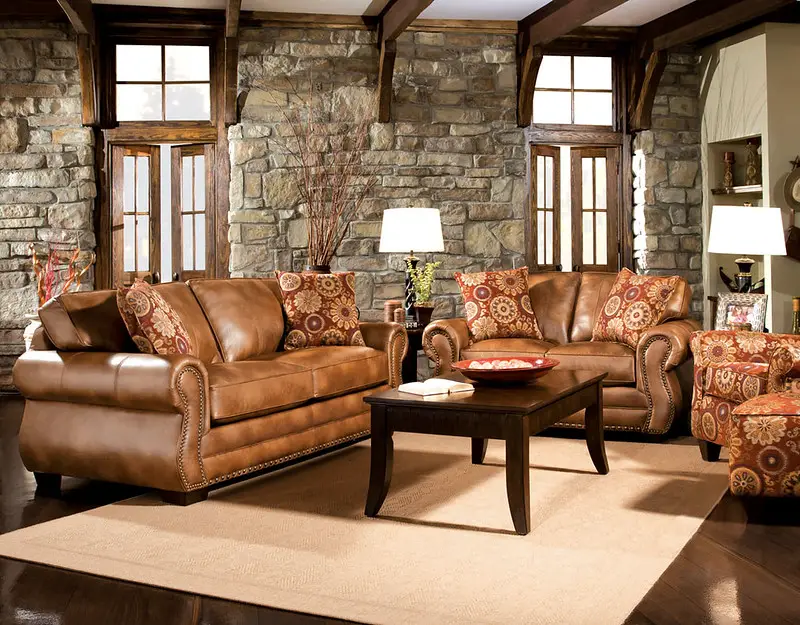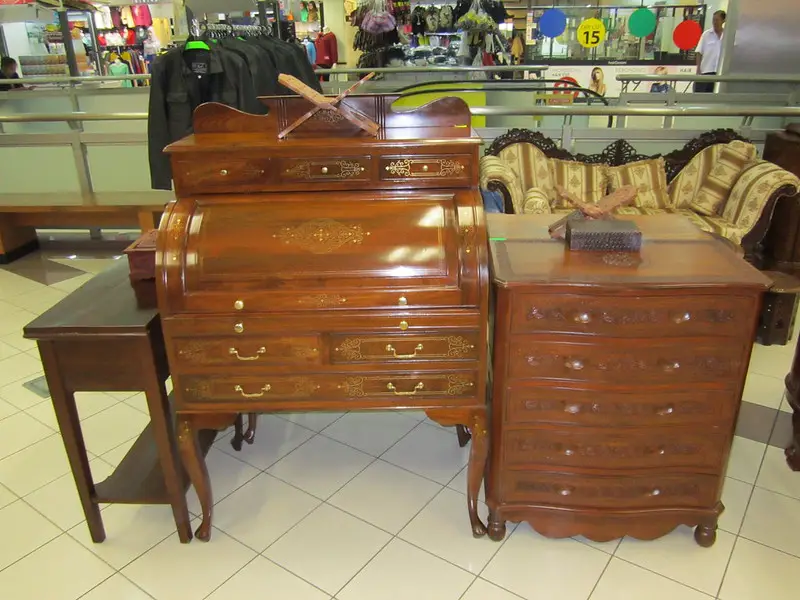Offshoring poses threat to American manufacturing unlike anything else. Low-cost production in countries like China, Taiwan, and Indonesia has contributed to the decreasing prices of manufactured products in America.
Among the most affected industries was furniture manufacturing.
American factories closed. Numerous employees lost their jobs. Entire towns were decimated.
This summary is about the story of how offshoring has negatively affected American furniture manufacturing. The story touches on the Virginian family businesses who sought to wrestle the situation and tells how the whole furniture industry gathered to resist the low prices of Chinese furniture.

Chapter 1 – American furniture manufacturers bloomed during the first half of the 1900s.
During the last period of the industrial revolution, the early 1900s saw innovation in technology and manufacturing. Computers, automation, and global networks had not yet shown their faces while people relied heavily on their physical power to earn their livings.
The circumstances created the perfect setting for the traditional American industry, like furniture manufacturing.
At that time, people were moving from rural places to towns and cities to live near the new factories in the industrialized world. This, in turn, increased the demand for mass-production of furniture.
The development of railroad networks allowed people to easily transport furniture to other cities. A furniture manufacturer would be able to service clients all around the United States.

A great example of how furniture manufacturing benefited people was John David Basset Sr., who started making bedroom furniture in Virginia in 1902.
Realizing that he could use his family’s land and forests to make furniture, he decided to get a loan from his uncle. Then, he began making bedroom furniture and even expanded his business to Canada.
During that time, furniture-makers greatly benefited from cheap labor, meaning that the production costs were nothing to worry about.
Despite the low wages of factory jobs, people would rather work at them than to work outside in fields or mines. To give an idea of the low wages, the first workers in Basset’s factory earned a mere five cents per hour.
Despite the abolishing of slavery half a century ago, African-Americans still faced the results of oppression, alienation, and discrimination. Thus, they worked for low wages at factories and created a cheap source of labor.
The Basset Factory was among the few that employed black workers until 1933, though their hourly wages were considerably lower than white employees. Hiring low-cost workers helped the Basset family to make furniture that was cheaper compared to the competitors.
Chapter 2 – From the 1980s onwards, Asia started to become an important figure in the furniture-making business.
The period until the mid-20th century was a period of competition among the Bassets and other American furniture companies within the American market.
But the cost of manufacturing quickly increased in America. The rise was the result of regulations about factory conditions and labor laws in America and the emergence of regulation-free cheap factories from abroad.
American companies began to offshore to Asia, benefitting from the low-cost labor overseas during the late 1970s.
The first company owned by an outlander in China was a purse manufacturer, which was purchased in 1978. During this time, offshoring for big products like furniture seemed like an impossible idea.
But just one year was enough to refute that idea: first, small pieces of furniture made by Asian manufacturers, like cocktail tables, started to be sold in the American market.
During the late 1970s, a Taiwanese person gained a mere $1.40 per hour while an American person earned as much as $5.25 per hour. Those in China had the lowest wage for their labor with only 35 cents per hour.

Gradually, American furniture producers decided to start offshoring, first by buying small parts and slowly buying finished products from Asian factories. They then sold them under their brand in the US.
Asian companies started producing the furniture by themselves and sold these finished products to America.
Soon enough, Asian furniture manufacturers were seen as more than just low-cost labor. They were now strong competitors to American factories.
The first person to start a furniture factory in Hong Kong was Larry Moh. He aimed to export the furniture made there to the American market. What he had done in practice was imitating what American companies like Basset did, selling furniture for 20 to 30 percent less, not including the transportation fees to the cost.
Within ten years, his company, called Universal Furniture, was regarded as the fourth biggest furniture-maker in the world!
The circumstances took a turn for the worse or the American furniture producers after China joined the World Trade Organization in 2001. Indeed, during the period between 2000 and 2002, Chinese furniture exports rose by 121 percent.
Chapter 3 – Consumers and companies embraced Asian products.
After Asian companies expanded their products to the American market, Americans had the option to support America by purchasing local products. But they didn’t.
Consumers quickly embraced Asian furniture as they didn’t cost as much as their American counterparts. They quickly felt okay to buy from overseas.
Of course, ordering from Asia to America had its own difficulties, especially during the initial period. For starters, the customer service proved to be insufficient: how would the customers have their defective furniture repaired when the service was overseas?
But that didn’t stop Americans from being attracted by the lower prices. After all, there is no reason to pay $1,000 for a bookshelf when you can find one for $500, right?
Besides, lower-cost furniture meant that they were more disposable for the customers. So, although the Asian products were not made with high-quality, customers still chose them over American-made ones. After all, they didn’t need their bed frame to last for generations.
This approach to Asian furniture negatively impacted American furniture factories. By 1998, one-third of the furniture customers bought in the US was imported.
The situation made American factories accept Asian products as well. Retail chains benefited immensely from Asian products since they proved to be profitable even with their shipping costs. Asian factories were also happy to export their products, so they agreed on the relatively low prices for competition.

Even American manufacturers were intrigued by the idea of Asia overtaking the production process. Above all, offshoring provided them attractive discounts on labor costs and supported them in profiting in enormous amounts, eventually helping them to be on par with the Asian factories.
Asia introduced a brand-new way for American factories to produce their furniture for cheaper prices, which also affected customers positively in that they had access to cheap furniture. So, what was the problem?
You will understand how offshoring and importing cheap products damages everyone as you read the following chapters.
Chapter 4 – Usually, importing means there is no fair competition.
What the American factories struggled with when rivaling Asian imports was not only the competition for low prices. The nature of the competition was unfair, to begin with.
Low-cost imports may bring about a loop of competition for prices which ultimately leads businesses to work themselves to the point of exhaustion.
Basically, local companies become obligated to import if they want to rival the prices from foreign competition. This eventually leads to many companies not being able to compete and become driven out of business.
Let’s look at the example of Kincaid Furniture. During the early 80s, there were 12 Kincaid factories with more than 4,000 workers. Yet soon the brand started making wrong decisions and was forced to begin importing.

Universal Furniture imitated Kincaid’s trademark product, which was a dining room chair that was sold for $220 and sold it only for $39. Despite resorting to importing, Kincaid still was not able to compete with Universal, so they were bought out eventually in 1989.
Another factor that made the issue hard to solve is that the Chinese government supported their factories while their American counterparts were on their own with no support from the US government.
Asian factories had the upper hand since they were more advantaged labor-wise. Still, they were required to pay for materials and transportation. And that’s where the government helps them:
For example, export policy revolves around increasing the quality of life for local people in China. In order to accomplish that, local factories needed to enter the American market, which also meant that they needed to keep their prices low to compete. But cheap prices would result in companies losing money, thus, the government gave subsidies to maintain the profits for the businesses.
How can American factories rival the Chinese ones in such a scenario? Suppose that they shift their production overseas, they still have to break even. The only way they can do that without the aid of the US government is by selling at a higher price than Chinese companies.
Chapter 5 – Offshoring and importing have impacted the situation of American workers in a terrifying way.
American manufacturers are pretty unfortunate to try to compete with foreign imports. But the ones that are affected the most are the American factory workers.
While American factories offshore during the process of production, more and more factory workers are left without a job as a result.
This is why conversations about foreign trade should include the employees at the factory instead of only targeting management and the board of directors.
One by one, American furniture manufacturers have been left with no other choice than closing their local plants and laying off thousands of employees.
Following China’s admission into the World Trade Organization in 2001, around 63 thousand American factories were closed. Consequently, five million American workers were left without a job.

What’s more, many of these laid-off employees found themselves unable to work for the following years after their factories closed.
Some might think that these kinds of things can happen to anyone in the job market. They just have to get over it and find another job. But the reality is different for those workers who were unable to find any other options.
Let’s say you’re an accountant. You might easily find another accounting job in another company if you were to get fired. But what can factory workers do when all the other factories are closed?
There are work training programs whose aim is to aid people to shift the industries they work in, but many of the former factory workers do not apply for such programs. Having known only factory related jobs, most of them do not have the capability or the confidence to try and find work in another industry. Or they are simply too busy trying to make a living through part-time jobs.
However, in spite of these disheartening facts, there is still good news: being hurt by the globalized economy is not something permanent. You will see how American factories regained their position in the economy in the final chapters.
Chapter 6 – The law must protect American businesses.
The situation of factory closures and widespread unemployment might appear unethical. The unfair competition is not just immoral, but it’s also illegal!
The standards accepted by members of the World Trade Organization remarks that it is illegal to dump. What that means is that it is illegal for a government to try to make companies in other countries close by setting competitive prices that are considerably lower than the production cost.
If it can be proved that a country’s dumping has driven local companies to the brink of closing, or has led to increasing unemployment, then the situation is regarded as illegal by the WTO standards.
Basically, domestic companies should be rightfully protected from the unnaturally low-priced Asian imports.
If American companies are able to show proof of illegal dumping, then they are qualified to seek support from the government.

The sanctuaries provided by the WTO are in accordance with laws like the Continued Dumping and Subsidy Act of 2000, which impose compensation fees onto the dumping offenders. Then the fees are collected and sent back to the American businesses who were negatively affected.
So, suppose that the three biggest Chinese companies damaged 20 American ones by dumping, then the American factories may receive the duties levied on the Chinese ones. Therefore, they are granted money to repair the damage done to their businesses.
Overall, the law protects American businesses when they are at risk of being harmed by cheap imports.
Chapter 7 – American producers can challenge unfair competition.
If the law is supporting them, why don’t American factories take these illegal competitors to the courtrooms?
Indeed, American companies can definitely overcome dumping by taking them to the court. But the situation is not always that easy.
To start a Commerce Department inspection on dumping, companies must collect petitions from more than half of the industry. This usually means that they need to spend a lot of money on research and legal costs.
These costs make it really hard for companies to initiate as they are already experiencing trouble with cutting prices and lowering costs.
Yet it doesn’t mean it’s impossible!
John D. Basset III, the grandson of the Basset company founder is a great example. John spent months trying to initiate research on the People’s Republic of China. Most of his colleagues made fun of his struggle, and he lost partnerships with businesses for trying to stop the low-cost parade.

But John persisted. He used all his time on the phone, at meetings, at conferences in addition to interviews and speeches where he strived to encourage people to be heated about maintaining American jobs.
After a year of trying vigorously, he was finally able to gather about 57 percent of the American furniture producers to file a petition against the People’s Republic of China in October 2003.
Consequently, the Department of Commerce initiated the investigation and concluded that Chinese factories were in fact dumping. Therefore, John and the co-petitioners were provided with the right to collect on the duties that were collected from the biggest dumpers.
American companies may rival foreign factories no matter the pricing if they have enough motivation. Companies can try new ways to challenge cheap imports instead of resorting to offshoring when the circumstances get rough.
In John’s situation, he used the duties to renovate his plants. He also came up with ways to increase efficiency and consequently regaining the competitive edge.
Chapter 8 – Protecting local jobs are as beneficial for businesses as offshoring.
Why was John D. Basset III so motivated to challenge the dumpers? Wouldn’t he profit more from closing local factories, shifting production to offshoring, and enjoying what he earned somewhere?
Businesses do more than just making money; they also deliver value. Let’s say you are the leader of the company. The first question you have to ask yourself is what your company does: does it provide profit to you, or does it do something more?

After the 1980s, most of the furniture manufacturers shifted production offshore. They eventually closed almost all factories in America. What started as importing particular parts of their wares ended with shifting the entire production phase to Asia. They would then stamp their brand name and ship it to the US.
Considering the process goes like this, one might wonder: whose product is it really? Can they be called “American” if the only American thing is the brand name? Does the brand name change anything when the production is done in a completely different country? Probably not.
Companies are responsible both to their workers and to their community. Furniture manufacturers have their own traditions. Usually, these factories employ people who have known nothing but factory work.
Let’s look at the example of the Bassets, who started their business in 1902. Despite John D. Basset III’s distancing himself from the family company because of qualms and joining his uncle Vaughan-Basset’s company, he still saw himself in charge of the conditions of his workers. Thanks to his efforts, he saved 700 jobs in Galax, Virginia.
Factory Man: How One Furniture Maker Battled Offshoring, Stayed Local – and Helped Save an American Town by Beth Macy Book Review
The unconstrained furniture import from Asia resulted in the closing of many American factories. Millions of Americans were laid off as a result. But the situation doesn’t need to be this grim: companies have the right to protect their workers and communities and challenge the gloomy effects of globalization.
Try Audible and Get Two Free Audiobooks
